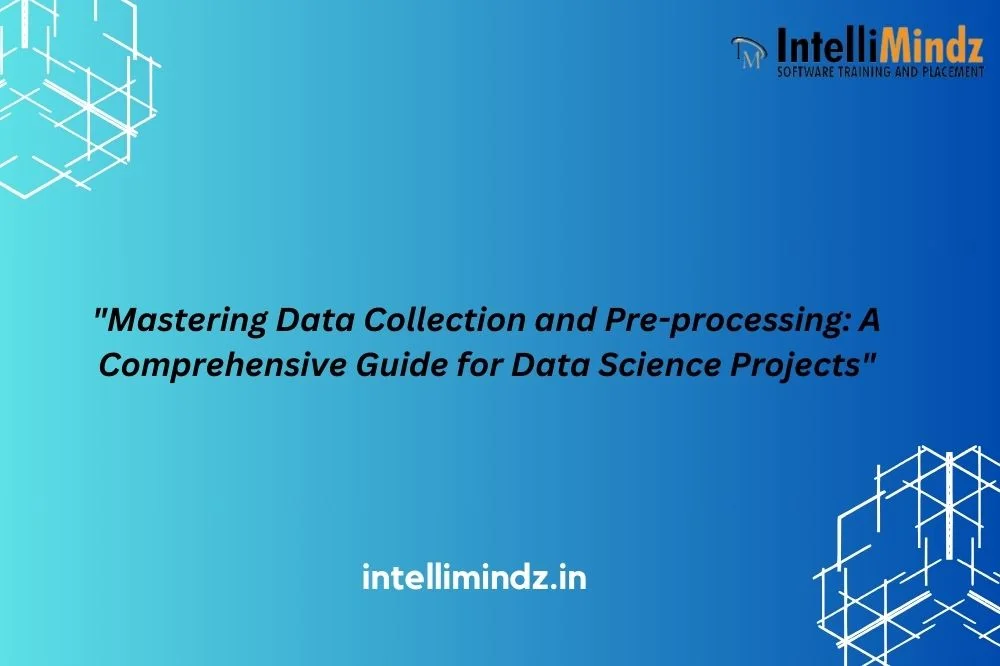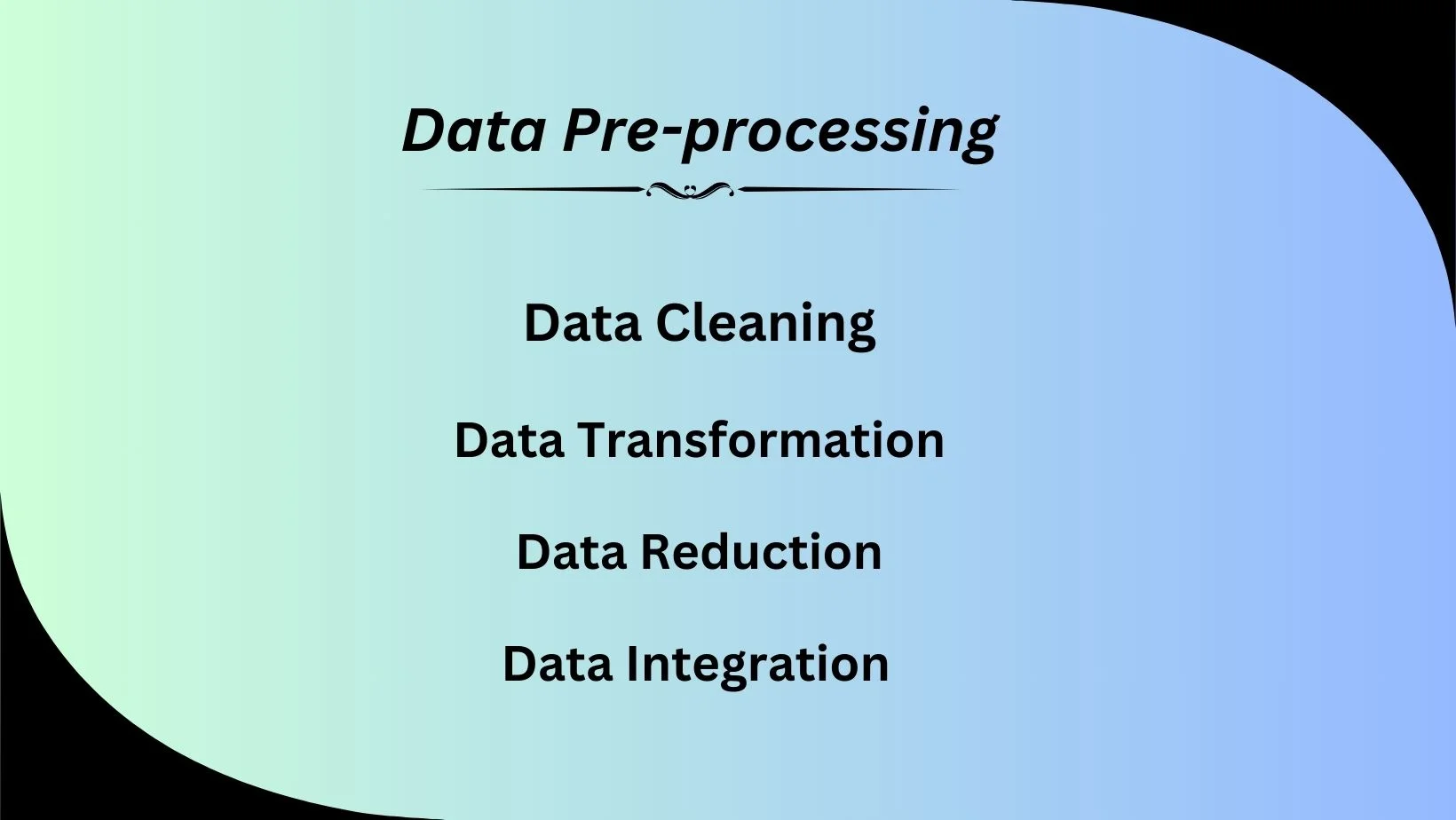Mastering Data Collection and Pre-processing: A Comprehensive Guide for Data Science Projects

Mastering Data Collection and Pre-processing: A Comprehensive Guide for Data Science Projects
Data Collection
Defining Objectives
The primary goal of the records collection technique is to collect pertinent statistics that aligns with the precise dreams and targets of the mission. This consists of defining clean metrics, expertise the cause of the statistics series, and outlining how the accumulated information might be applied to achieve preferred results.
Identifying Data Sources
Relevant information assets are decided based totally on the nature of the project and the statistics wanted. This entails figuring out each internal and external sources which could offer valuable statistics.
Internal sources embody databases, organisation statistics, preceding study’s findings, and every other proprietary statistics owned or generated by the organization.
External assets may additionally consist of public databases, APIs (Application Programming Interfaces) supplied by using 0.33-birthday celebration structures, facts available through net scraping strategies, posted reports, and other publicly available repositories of statistics.
Data Gathering
Access to identified data resources is obtained thru suitable channels, ensuring compliance with prison and moral requirements, as well as any vital permissions or agreements.
Data series methods are decided on based on the kind of statistics and its supply. This may also contain automatic approaches inclusive of API calls for gaining access to based records, web scraping for extracting statistics from web sites, or guide access for amassing statistics from bodily documents or surveys.
Data Quality Check
Initial excellent tests are carried out to evaluate the integrity and reliability of the gathered data. This consists of comparing elements inclusive of completeness, accuracy, consistency, and timeliness.
Anomalies or inconsistencies inside the records are recognized and addressed through validation procedures, statistics cleansing techniques, and corrective measures. This guarantees that the data meets the desired standards and is appropriate for evaluation and selection-making purposes.
Data Pre-processing
Data Cleaning
Missing values are dealt with through various strategies such as imputation (replacing missing values with predicted ones based totally on statistical measures or algorithms), removal (getting rid of rows or columns with missing values), or other techniques relying on the context.
Inaccuracies or inconsistencies inside the facts are corrected via validation approaches, error detection algorithms, and manual verification.
Data codecs and representations are standardized to make certain uniformity and compatibility across specific datasets and structures.
Data Transformation
Numerical functions are normalized or scaled to a consistent range to prevent biases in algorithms that are sensitive to the scale of variables.
Categorical variables are encoded into numerical representations using strategies like one-warm encoding (developing binary columns for every category), label encoding (assigning a unique numerical label to each class), or different encoding methods.
Feature engineering includes creating new capabilities from present ones, leveraging area knowledge or mathematical transformations to beautify predictive strength or capture important styles inside the information.
Data Reduction
Dimensionality discount strategies together with Principal Component Analysis (PCA) or t-Distributed Stochastic Neighbour embedding (t-SNE) are carried out to reduce the quantity of capabilities even as maintaining significant records and minimizing computational complexity.
Feature choice strategies are hired to pick out and retain handiest the most applicable functions, decreasing redundancy and noise within the dataset.
Data Integration
Datasets from one-of-a-kind sources are merged or joined primarily based on commonplace identifiers or key variables to create a unified dataset, facilitating comprehensive analysis and decision-making.
Data Splitting
The dataset is cut up into schooling, validation, and testing sets to evaluate the performance of system learning models successfully.
Ensuring statistics representativeness and stability throughout units allows prevent biases and ensures the generalizability of version overall performance.
Data Normalization
Data is scaled or normalized to make certain consistency and comparability across one of a kind features, stopping certain features from dominating others due to variations in scale or significance.
Features are standardized primarily based on statistical homes consisting of suggest and widespread deviation to middle the data round 0 and attain a general deviation of 1, making interpretation and assessment easier.
Data Validation
The pre-processed facts undergoes rigorous validation to ensure it fulfils the essential prerequisites for subsequent evaluation and modelling tasks. This includes assessing diverse elements which include completeness, consistency, accuracy, and appropriateness of the data for the intended motive.
Sanity checks are carried out to verify the integrity and reliability of the processed information. These checks contain comparing the converted information in opposition to expected stages, styles, or logical constraints to identify any anomalies or discrepancies that may have arisen during pre-processing.
Pre-processing steps are iteratively subtle based on the validation effects. If any issues or inconsistencies are detected, modifications are made to the data cleaning, transformation, or integration approaches to address them successfully. This iterative refinement ensures that the records remains accurate, dependable, and healthy for evaluation in the course of the records processing pipeline.
Documentation
The whole information series and pre-processing process is very well documented to provide transparency and clarity regarding the approaches undertaken.
Details concerning the assets of information, along with both inner and external assets, are documented. This includes data on databases accessed, information acquired from the corporation’s structures, public databases applied, APIs employed for information acquisition, and any internet scraping techniques applied.
Methods used for gathering and pre-processing the records are mentioned comprehensively. This encompasses descriptions of the particular techniques employed, such as API calls, web scraping scripts, manual entry methods, and algorithms used for facts cleaning, transformation, and integration.
Any selections made throughout the records series and pre-processing degrees are documented, along with reason behind the choice of sure techniques, managing of lacking facts, remedy of outliers, and adjustments made to make sure data quality and integrity.
Metadata documentation for the pre-processed dataset is created to offer unique statistics approximately its shape, content, and traits. This includes descriptions of each variable or function gift inside the dataset, their facts kinds, devices of measurement (if relevant), and any adjustments or encoding implemented. Additionally, statistics about the dataset’s starting place, versioning, licensing, and any applicable terms of use is covered to facilitate right attribution and replication of analyses performed using the dataset.
Conclusion
The information collection and pre-processing method concerned several key steps aimed at collecting, cleansing, and reworking raw records into a usable format for evaluation and modelling. Relevant facts resources had been identified, accessed, and integrated, at the same time as lacking values have been treated, inconsistencies corrected, and functions standardized and encoded. The technique culminated within the creation of a pre-processed dataset equipped for similarly evaluation.
Throughout the information collection and pre-processing adventure, various challenges have been encountered and treasured training had been found out. Challenges covered gaining access to proprietary information assets, dealing with missing or incomplete information, handling inconsistencies across extraordinary datasets, and making sure data pleasant and integrity. These demanding situations underscored the significance of careful planning, thorough validation, and iterative refinement of pre-processing strategies. Lessons found out revolved around the importance of clear documentation, strong validation approaches, and versatility in adapting to surprising issues or adjustments in statistics necessities.
The pre-processed dataset units the level for in addition evaluation and modelling endeavours. With easy, standardized facts at hand, researchers and analysts can now discover patterns, developments, and relationships within the dataset extra efficiently. The implications for in addition analysis and modelling include the ability to derive actionable insights, expand predictive fashions, and make knowledgeable choices based at the information. By leveraging the pre-processed dataset, stakeholders can benefit a deeper expertise of the underlying phenomena, perceive regions for development, and power impactful consequences thru facts-pushed approaches.
Delve into mastering data collection and pre-processing for data science projects in our blog post. Ready to enhance your skills? Immerse yourself in our specialized Data Science Training in Bangalore. Gain hands-on experience, expert insights, and advanced techniques for efficient and impactful analysis. Elevate your proficiency – enroll now for a transformative data science learning experience and become a master in handling data for successful projects!
- Navigating thе Digital Rеalm: A Guidе to Pagе Navigation Mеthods - March 11, 2024
- Navigating the Web: A Guide to Different Web Controls - March 11, 2024
- Unlocking Succеss: Navigating Contеnt Analytics and Pеrformancе Mеasurеmеnt - March 11, 2024

